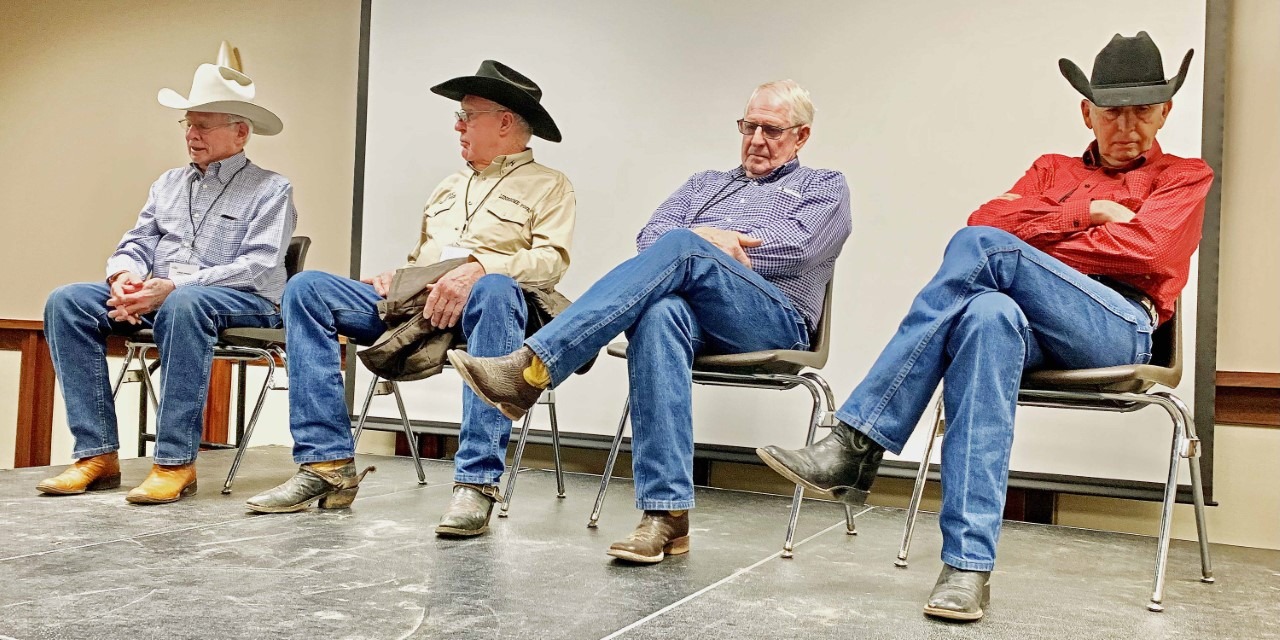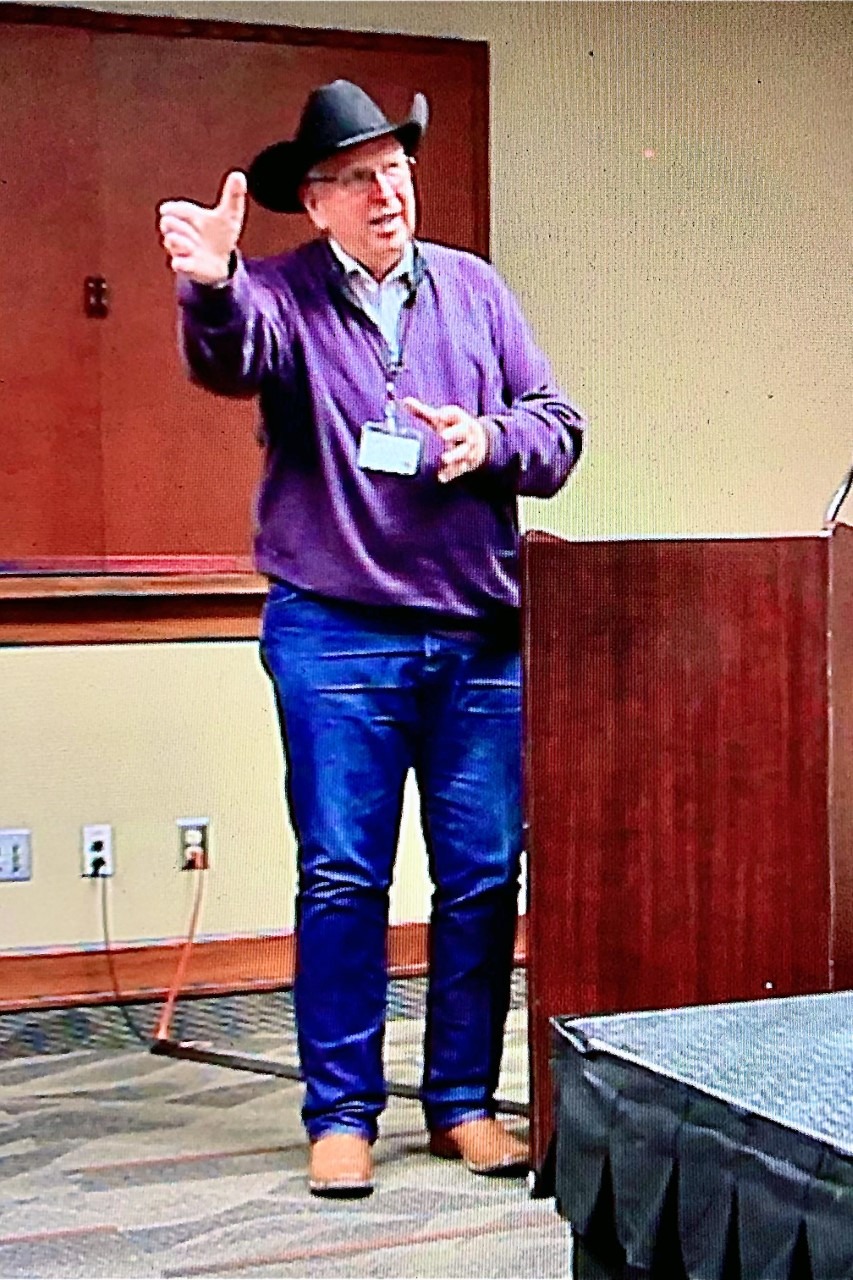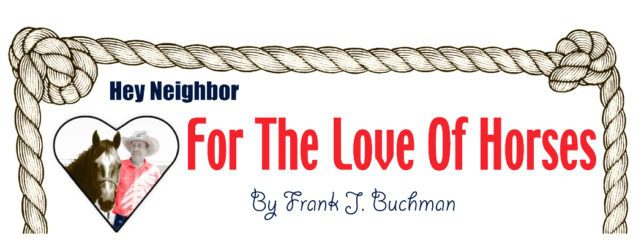Involvement with horses has been the lives of four legendary Kansas horsemen speaking at the EquiFest of Kansas in Salina.
Dr. Stan O’Neill moderated the panel featuring personal stories, occurrences and outlooks for the equine industry.
Panelists were Alfred Janssen, Scott City; Frank Higgs, Valley Center; Richard Clower, Winfield; and Craig Cole, Downs. While there are similarities of horse involvement among the group each has unique niches working with and handling horses.

Actually a farmer, Janssen, 77, also Quarter Horse leader, is likely best acknowledged as a renowned professional horse photographer. Many of the world’s top horses have been photographed by Janssen with those images some decades old still widely recognized. Additionally, Janssen raised Quarter Horses of which a number collected world show ring titles when he exhibited them personally.
Higgs has been a Quarter Horse breeder more than six decades while serving as a Quarter Horse leader. Likely best recognized for Tinker Red McCue, Higgs raised the stallion from a baby. The outstanding performance horse was trained and exhibited personally by Higgs collecting and siring multiple champions. Higgs, 86, continues breeding, training, and riding working ranch horses.
Clower is widely recognized as a farrier of all horse breeds having shod many horses which have become world champions. A professional farrier since 20-years-old, Clower, 75, first shod gaited horses and then many Quarter horses. Now retired, Clower’s hobby was training and driving his Standardbred trotter and pacer race horses. He had a number of track wins.
A lifetime horseman, Cole, 72, likely has the most lifetime diverse experiences highlighted by show ring titles. First major achievement was exhibiting the highpoint youth stallion, Rooster Dawn, in 1967. Initially working for Dudley & Acre Quarter Horses, Cole started his own business in 1974. Son Ryan is his affiliate training horses and riders while also breeding horses.
The horsemen pointed out major transitions that the horses industry has experienced during their careers. “I learned the hard way from experiences in training and showing horses,” Higgs said. “I didn’t have a hired trainer but still competed successfully in a variety of events at every show.”
Competing in and managing western Kansas horseshow circuits, Janssen personally trained and showed his home raised horses. “We’d start early in the morning with sometimes as many as 50 horses in the halter classes,” he said. “Then saddle up and ride in several events and have the show over by mid-afternoon.”
Then Quarter Horse shows became specialized with horses bred for a specific event. Certain horses would only show in halter classes, and others just in rail pleasure classes. Even top performance horses became specialized often entered only in reining or cattle working events.

“Sometimes classes would only have a few entries yet with the numerous divisions running into wee hours,” the horsemen agreed.
“It required lots of money to show registered Quarter Horses successfully generally requiring professional trainers,” Higgs pointed out. “Small time breeders and exhibitors who did the work themselves were pretty much pushed out of showing for the enjoyment.”
Trends are changing back to earlier times though, Cole emphasized. “We really have two divisions of registered Quarter Horse shows now,” he said. “There are still the specialized horses exhibited by professional trainers. But the versatility classes are for all-around horses which owners can enjoy showing their own horses.”
In clarification, Cole said, “To qualify for versatility recognition, a horse must show in several performance classes including cattle events. Then they are qualified to exhibit in performance halter classes.”
There are again high numbers of entries today in the versatility divisions, Cole said. “Still the horses cost a lot. It takes a considerable amount of money to have a horse that will win in versatility classes, too,” he continued. “The overall horse market is the highest I’ve ever seen it in my life.”
While flying all over the country to photograph horses, Janssen, a college ag journalism major, was self-taught. “I studied photos of horses in magazines and worked to make mine like them, only better,” he said.
Photographing horses is a team effort. “It’s important to have a green grass and blue sky background with the sun over your left shoulder,” Janssen said. “The horse and handler must cooperate. A person is needed to set the horse’s feet and another one to make sure the horse’s ears are forward.”
With photographs taken on film negatives before digital cameras, Janssen continued snapping photos every 1-1/2-seconds when the horse was positioned. “A flick of an ear or blink of an eye changes a photo completely,” he said.
Processing his own negatives for action shots and portraits, Janssen often took profile views of horses for clients. “Many photographs in advertising today only show the horse’s head. That really doesn’t reveal what a horse looks like,” he evaluated.
All four horsemen verified their horse knowledge has come from experience. “I learned a lot from leading trainers Dean Smith and Billy Allen,” Higgs credited.
Cole critiques horses stringently as they are being shown. “There’s always more to learn about training horses,” he said.
Clower learned from other farriers as well as owners of the horses he was shoeing. “Veterinarians provide me with x-rays and I shoe the horse by their recommendation to improve the performance,” he said.
While quite different from the Western riders, fascination for raising harness horses has always remained close to Clower’s heart. “I’m retired now, but studying all kinds of horses is still very enjoyable for me,” he said.
Both Higgs and Cole have acquired young horses with optimism for their futures with horses. “I plan to keep going working with horses just as long as I’m alive,” Higgs said.
“I have a new stallion Farra Rey Time with colts coming this spring,” Cole said. “Working with horses is all I’ve ever wanted to do and will continue to do so until I’m gone.”
